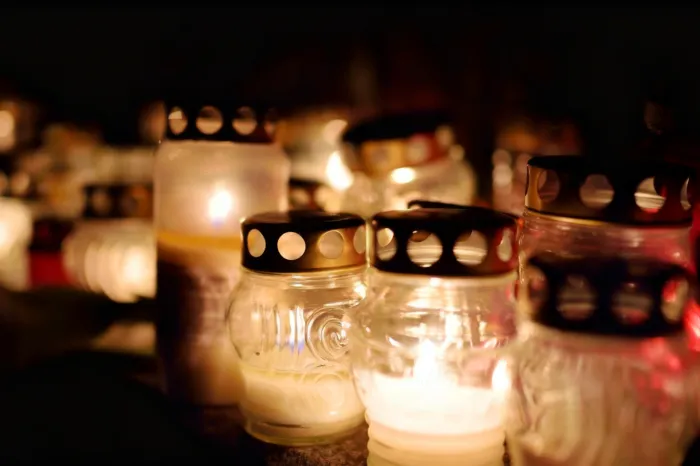The Resurrection Roster: Who Got a Ticket Back?
In the annals of human history, certain party tricks have stood out: pulling a rabbit from a hat, walking on water, and—let’s not overlook—raising people from the dead. If you think your magician friend’s card tricks are impressive, wait until you hear about Jesus’s guest list for resurrection. Today, we dive into the very entertaining (and theologically significant) question: Who did Jesus raise from the dead? And as a bonus, what’s the big deal about it?
The Biblical Hall of Comeback Kids
Now, for anyone who’s doodled through Sunday School or only caught biblical references through memes, let’s lay it out: Jesus didn’t resurrect everyone he met, but those he did were headline-worthy. First, let’s address the big names:
-
Lazarus: The undisputed MVP of resurrection stories (John 11). Jesus rolled up to a tomb after Lazarus had been dead for four days. People were concerned about the smell, but Jesus wasn’t there to air out the place. With style, he shouted, “Lazarus, come out!” and Lazarus shuffled out, probably wondering what his breath smelled like after four days in the tomb.
-
The Daughter of Jairus: This one’s in Mark 5, Luke 8, and Matthew 9—so you know it’s a crowd favorite. Jairus, a synagogue leader, begs Jesus to heal his daughter, but she dies before Jesus arrives. Not to be discouraged by inconvenient timing, Jesus announces, “She’s not dead, just sleeping.” The doubters laughed until, minutes later, she was up and asking for snacks. Miraculous comeback or clever reinterpretation of nap time? You decide.
-
The Widow of Nain’s Son: Here’s an underdog story found in Luke 7. Jesus stumbles on a funeral procession, sees a widow mourning her only son, and—without an invite—tells the young man, “Get up.” The son obeys. The crowd is stunned. The family reunion, minus snacks, ensues.
Now, considering today’s entertainment news standards, Jesus would have had the most dramatic entrance at any award ceremony. “If you’re going to leave, make sure you have someone to raise you back up!” might as well be the new motto.
Why Resurrections Make Headlines: Not Just Ancient Clickbait
What’s the point of these biblical comebacks? Are they just spiritual clickbait, or is there substance? Let’s give credit where it’s due: resurrection, as Cory Driver explains in the Lectionary blog, is not just a cosmic magic trick; it’s the power of God’s love in action. Bodily resurrection, Driver insists, is central to the good news—which means, unlike cartoon spirituality where the soul floats off with a halo and harp, Jesus demonstrates real, physical restoration. This spooked the Sadducees, the ancient equivalent of skeptics who hated surprises, and triggered debate that Jesus answered with grammar jujitsu, proving God is the God of the living, not the dead.
Resurrection stories weren’t there just to terrify undertakers. They were a living billboard declaring that death doesn’t get the final word. As Fr. Agustin Opalalic reminds us, in All Saints’ and Souls’ celebrations, we’re not just being sentimental about grandma’s cookies or Uncle Joe’s questionable jokes. We remember, pray, and party (with candles, not cake) because we believe the line between living and dead is thinner than expired milk—held together by God’s love.
Purgatory: The Waiting Room to Resurrection News (And Why Catholics Care)
Let’s not skip over the show’s opening acts: purgatory, as referenced in “All Souls Days and our mortal end.” Often misunderstood as spiritual limbo where souls wait for their elevator to heaven, purgatory is, in Catholic tradition, the cleansing station. Unlike a celebrity waiting for their big comeback, souls in purgatory get prayers from fans (the living) and, according to Augustine, benefit from spiritual charity—from Masses, alms, and good vibes.
Of course, this practice had its critics. The early Christians, continuing an old Jewish custom, prayed for the dead, even if it got a skeptical side-eye from some. The central idea? Death isn’t the end credits: it’s the hallway to a new show, with resurrection as the surprise twist. Jesus’s acts of raising the dead illustrate that love outlasts everything—including flatlining.
Why Is Resurrection the Plot Twist We Need?
In a world obsessed with zombie movies, vampire franchises, and TikTok “resurrection” dance challenges, the ancient accounts of Jesus seem almost quaint. But there’s real tension: death is scary, unpredictable, and excludes no one. Yet Jesus’s message is clear: there is hope. Whether you’re lighting a candle, visiting a grave, or just hoping your WiFi connection comes back to life, the resurrection theme reminds us to love strongly, forgive quickly, and keep our eyes on a horizon bigger than six feet under.
And let’s address the perennial awkwardness: every time someone asks “Who did Jesus raise from the dead?” you now have three names to start with: Lazarus, Jairus’s daughter, and the widow’s son. But the bigger story is that resurrection, for Jesus, is far more than a party trick—it’s a statement that, in God’s house, the lights are always on, and there’s always room for one more at the table.
Final Scene: The Communal Curtain Call
So, next time someone wonders about Jesus’s greatest hits, skip past water-into-wine and feeding thousands (as legendary as they are) and tell them about the “resurrection roster.” Death, in Jesus’s narrative, is more speed bump than cliff—a temporary interruption before the show goes on. As the Church celebrates All Souls’ Day, the Dedication of basilicas, and the core doctrine of resurrection, remember: the real star is hope—performing, year-round, free tickets for all.
So light that candle, say a prayer, and—just maybe—keep an ear out for someone knocking from inside the tomb: you never know who’s getting that encore performance.




























